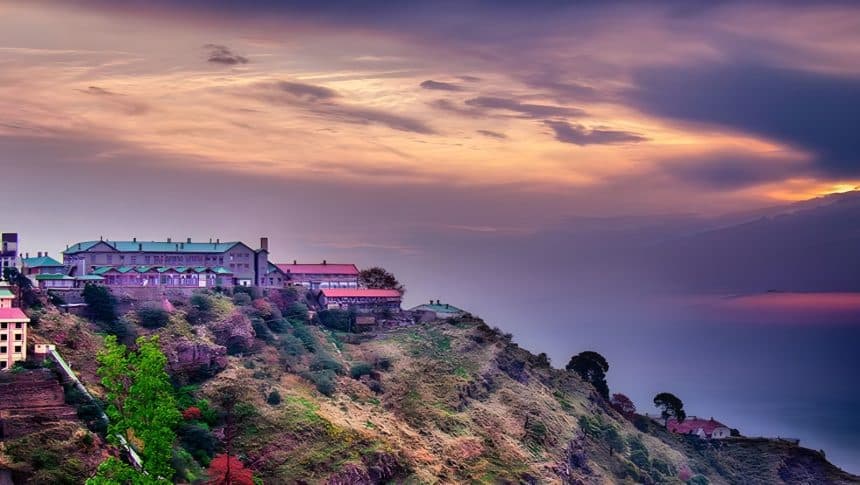Heat waves are expected to persist in the mid-hills and low hills/plains of Himachal Pradesh today and in the low hills/plains on May 30, 2024. Isolated rainfall will begin in the mid and high hills on May 30, 2024, and in the low hills/plains on June 1, 2024. Dry weather and severe heat waves are likely at isolated places on May 27 and 28, with heat waves continuing on May 29 and 30. From May 30, isolated to scattered rainfall with thunderstorms and lightning is anticipated across the state.
Himachal Pradesh is currently grappling with persistent heat waves, especially in the mid-hills and low hills/plains, with temperatures soaring to unusual heights. Over the past 24 hours, the region has experienced predominantly dry weather, with isolated rain in higher elevations such as Kinnaur, Lahaul-Spiti, Chamba, and Kullu. Keylong recorded the lowest temperature at 16.5°C, while Una hit a scorching 45.0°C. Despite clear skies in Shimla and ongoing heat waves in areas like Una, Bilaspur, Sirmaur, and Kangra, relief is on the horizon. Isolated rainfall is expected to start in the mid and high hills on May 30, extending to the low hills and plains by June 1. A new western cyclonic disturbance is also predicted to impact northwest India from May 30, bringing the promise of cooler temperatures and scattered thunderstorms.
Shimla is expected to have mostly clear skies for several days. However, a heatwave will also be present, according to the IMD Shimla.| Image Credit: Shimla.
Today in Himachal Pradesh, Shimla will have mostly clear skies. Heat waves are expected in some areas, including Una, Bilaspur, Sirmaur, Hamirpur, Solan, Mandi, Shimla, and Kangra and a yellow alert has been issued in this area. There might be light rain in parts of Chamba and Lahaul-Spiti.
Over the past 24 hours, Himachal Pradesh had dry weather. The lower hills, such as Kangra, Hamirpur, Una, Bilaspur, and parts of Mandi, Solan, and Sirmaur, stayed dry. The mid-hills like Shimla, Solan, Sirmaur, and Mandi saw isolated rain, as did the higher hills of Kinnaur, Lahaul-Spiti, Chamba, and Kullu. Temperatures were higher than usual both day and night, with Keylong being the coolest at 6.1°C and Una the hottest at 45.0°C. Heatwave conditions were reported in Bilaspur, Hamirpur, Kullu, Mandi, Shimla, Kangra, Sirmaur, and Una. A new western cyclonic disturbance is expected to affect northwest India starting May 30, 2024.
Today, there was no snowfall or rainfall anywhere in Himachal Pradesh. Keylong was the coolest at 16.5°C with a 99% chance of rain. Kufri was warmer at 25.3°C with a 12% chance of rain. Shimla recorded 28.8°C with a 13% chance of rain. Chamba and Sundernagar were quite warm at 37.4°C, both with a moderate chance of rain. Kangra was the hottest at 40.8°C but had only a 2% chance of rain.
During heat waves and dry weather, it is crucial to take specific precautions to ensure safety and well-being. Staying hydrated is paramount; drink plenty of water and avoid alcohol and caffeine, opting for hydrating foods like fruits and vegetables. Limit strenuous activities, especially during peak heat hours (10 AM to 4 PM), and take frequent breaks in cool, shaded, or air-conditioned areas if you must be active. Wear lightweight, loose-fitting, light-colored clothing, and protect yourself with hats, sunglasses, and a broad-spectrum sunscreen with at least SPF 30. Stay indoors as much as possible, preferably in air-conditioned buildings, or visit public places such as malls or libraries to cool down. It’s important to check on vulnerable individuals like the elderly, young children, and those with chronic illnesses regularly. Recognize symptoms of heat-related illnesses like heat exhaustion and heat stroke and seek medical help immediately if symptoms occur.
Fire safety is also essential during dry conditions; avoid activities that could spark fires, clear dry brush and dead vegetation from around your home, and follow local water use restrictions to conserve water. Ensure proper home ventilation and use fans with open windows or air conditioning to circulate cool air. Prepare an emergency kit with essentials such as water, non-perishable food, and medications, and stay informed with weather updates and local authority guidance. Additionally, water plants during early morning or late evening to reduce evaporation, and ensure pets have plenty of water and shade. On a community level, work with groups to develop heatwave response plans and set up cooling centers. Supporting public awareness campaigns about the dangers of heat waves and the importance of precautionary measures can further protect your community. By following these steps, you can mitigate the risks associated with extreme heat and dry weather, safeguarding your health and that of those around you.


